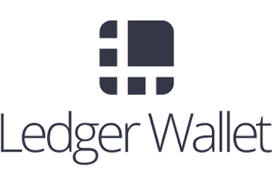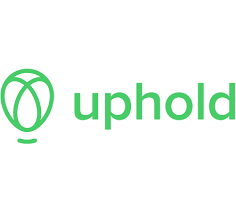Trick question! Cardano technically can’t be mined, but you can stake it for rewards on Uphold!
Mining cryptocurrencies is an area of the crypto space that is a mystery to many. While some may have a surface-level understanding, most people have difficulty explaining how it works in detail.
Mining cryptocurrencies is the process in which a network of specialized computers verifies new transactions, and the miner receives cryptocurrency as a reward. In the case of Bitcoin (CRYPTO: BTC), it’s how new Bitcoin is created. Two major consensus mechanisms are used by most cryptocurrencies today. Proof of work (mining) is the older of the two, while proof of stake (PoS) is becoming more popular.
Crypto Mining Explained
Using their specialized computers, miners race other miners to be the first to guess a 64-digit hexadecimal number known as a hash. The higher the specialized computer’s hash rate, the faster it can spit out guesses and the more likely it is to earn the reward. The winner updates the blockchain with the newly verified transactions creating a new verified block to the blockchain.
Mining does not just create new crypto. It is a way to secure the blockchain, and the rewarded cryptocurrency creates an incentive for miners to do so. Mining is profitable if the rewarded crypto is more valuable than the cost to mine it.
Besides hardware costs, there is also the cost of a facility to house the miners and electricity. Crypto miners can consume a considerable amount of electricity, which generates heat. As a result, there must be a way to cool the miners, increasing electricity costs even more.
Many cryptocurrencies do not use mining to secure the blockchain and create new crypto. Instead, they use a more recent consensus mechanism called proof of stake. In proof of stake, users stake (deposit) their crypto to become a validator in the network. Validators are responsible for the same things as miners in a proof of work network.
Validators are chosen randomly and do not compete to validate transactions and create new blocks. The network selects a winner based on the amount staked and how long it has been staked. The network ensures good behavior by validators by putting a portion or all of their stake at risk for bad behavior. When not chosen, validators are also responsible for checking and confirming blocks they don’t create.
How to Mine (Stake) Cardano
Before continuing, it is essential first to make the distinction between Cardano and ADA. Cardano is the blockchain and ADA is the native cryptocurrency of the Cardano blockchain. So with that out of the way, how do you mine Cardano (ADA)? That is a bit of a trick question because Cardano is a proof-of-stake network. And as such, you can’t mine ADA; you stake it.
Step 1: Join a staking pool.
So now you know that ADA can not be mined but instead needs to be staked to earn more ADA. That being the case, what are the best places to stake ADA? This list focuses on the sites or wallets with the highest yield.
Platform Fixed Rate Variable Rate Interest Payout Lockup Period
Binance 5.09% to 8.38% 0.48% Daily Payout 30, 60 or 90 days
Kraken None 4% to 6% Weekly Payout None
Bitfinex None 4% to 5% Weekly Payout None
Daedalus wallet 5% None Every 5 days None
Exodus wallet 4.91% None Every 10 days None
Atomic Wallet 5% None Every 5 days None
Staking is the process of depositing crypto and receiving a yield (interest). This is similar to the interest you receive on a savings account, except staking pays a much higher rate. Staking is a great way to earn a passive income on your crypto.
A few things to watch for include mandatory lock-up periods (on Binance). Also, make sure that there are no hold periods after unstaking your crypto. Another thing to watch for is how long it takes to start receiving interest payments. With the Exodus wallet, it will take about 35 days before interest payments start. The Atomic Wallet will take about 20 days to receive rewards.
Step 2: Monitor the markets & withdrawal to your cryptocurrency wallet.
It would be great if you could stake your ADA and forget it, but that’s how it works. Risks are involved with staking your ADA or any crypto. Market volatility or a hack could inflict severe financial losses if you are not careful.
Everyone knows just how volatile the crypto markets are. If you want to stake an entire position at once, market timing is essential. You need to start staking when the price of ADA is low. Otherwise, if you buy at higher prices and the market suffers a severe decline, the loss of value could outweigh the staking rewards.
All investing carries some degree of risk. It doesn’t matter if it is in the stock market, crypto market, foreign exchange market or real estate market. They all carry risk in varying degrees. Even depositing money into a savings account carries risk — one that’s increasing daily with inflation soaring to levels not seen in decades.
A safer strategy is to build a staking position over an extended period using dollar-cost averaging (DCA). If you are staking crypto, it should be viewed as a long-term investment strategy that will reduce market risk and eliminate jumping into and out of staking pools because of market swings.
As for dealing with the risk of hacks, that can be mitigated by avoiding centralized exchanges. Several wallets support staking ADA out of the wallet. Most of these are desktop or mobile software wallets, which are hot storage wallets. The most secure would be a cold storage wallet like the Ledger hardware wallet. You can store your ADA in a Ledger wallet and connect the ledger to the Daedalus Wallet for staking.
securely through Ledger Hardware Wallet’s
website
Launched in 2014, Ledger has transformed into a fast-paced, growing company developing infrastructure and security solutions for cryptocurrencies as well as blockchain applications for companies and individuals. Born in Paris, the company has since expanded to more than 130 employees in France and San Francisco.
With 1,500,000 Ledger wallets already sold in 165 countries, the company aims at securing the new disruptive class of crypto assets. Ledger has developed a distinctive operating system called BOLOS, which it integrates to a secure chip for its line of wallets. So far, Ledger takes pride in being the only market player to provide this technology.
Best For
- ERC-20 tokens
- All experience levels
- Easy to set up and use
- Supports more than 1,500 different digital assets
- Tamper proof
- Portable
- Long-lasting battery
- Bluetooth connectivity features
What Is the Best Cryptocurrency to Stake?
The answer to this question depends on the state of the crypto market. Ideally, the best cryptocurrency to stake is the crypto of a project you believe in. But what if the crypto market has just entered a bear market? In that case, it would be wiser to stake a stablecoin to eliminate market risk.
The exception is if you are slowly dollar-cost averaging into a position. In that case, you may still consider staking crypto that could lose some market value. Staking should be regarded as a long-term investment. Long-term staking has a compounding effect allowing you to grow your position even faster.
Which is Better: Mining or Staking Cryptocurrencies?
Some say that it is better to buy into your positions. Others enjoy the challenge of mining crypto and contributing to the security of a blockchain. And many may choose to do a combination of mining, staking and buying.
Buying or building a mining rig requires a substantial upfront investment. Depending on market conditions, that initial investment can be recouped pretty quickly. Also, once you have the mining rig, the only expense is the electricity to run it and keep it cool.
However, a small 6 graphics processing unit (GPU) mining rig doesn’t use much electricity so even in a bear market, it is possible to be profitable or at least break even while accumulating crypto that can be held until the next bull market.
Staking can be started with a minimal upfront investment, especially if you are dollar-cost averaging into a position. However, most of the time, with favorable market conditions, mining will outperform staking by a wide margin. That being said miners will lose value over time, while the staked coins you use to validate on a PoS network may appreciate. Profitability is widely determined by the price of the asset rather than your earned rewards.
Where to Buy ADA and Other Cryptocurrencies
Cardano is a well-established cryptocurrency, so it can be purchased at most crypto exchanges. Coinbase, Gemini, eToroX, Binance.US and Crypto.com are some of the best exchanges that support ADA.
All of these have user-friendly trading platforms and plenty of liquidity and come in desktop or mobile app versions. If you don’t already have an account with one of these exchanges, setting one up is easy.
Whichever route you choose to build your crypto positions, it is best to take your time and enjoy the process. It is also essential to protect your investments by investing in an excellent cold storage wallet. Investing in cryptocurrencies puts a heavy emphasis on personal responsibility. It is up to every investor to learn how to transfer and store their crypto safely.
securely through eToro’s
website
Disclosure: eToro USA LLC; Investments are subject to market risk, including the possible loss of principal.
eToro, headquartered in Cyprus, England and Israel, has provided forex products and other CFD derivatives to retail clients since 2007. A major eToro plus is its social trading operations, including OpenBook, which allows new clients to copy trade the platform’s best performers. Its social trading features are top notch, but eToro loses points for its lack of tradable currency pairs and underwhelming research and customer service features
Best For
- U.S. based cryptocurrency traders
- Investors looking to CopyTrade other traders
- Simple user interface
- Several major cryptocurrencies and altcoins
- Expansive network of social trading features
- Large client base for new traders to imitate
securely through Uphold’s
website







